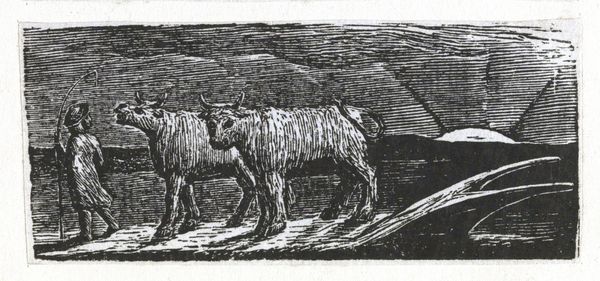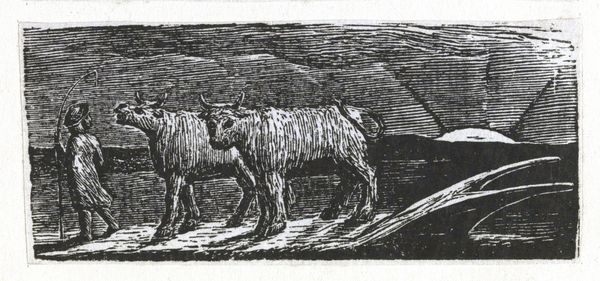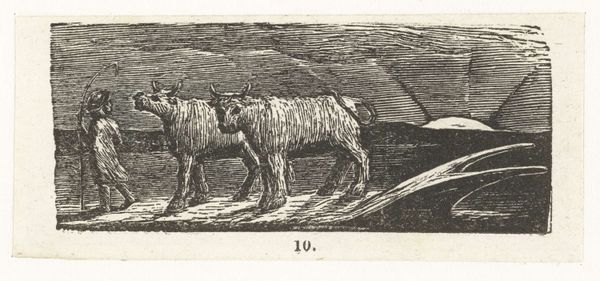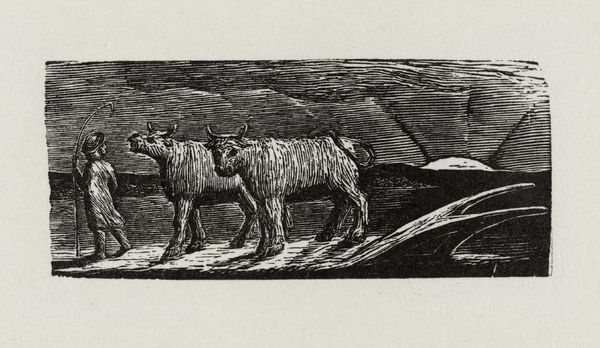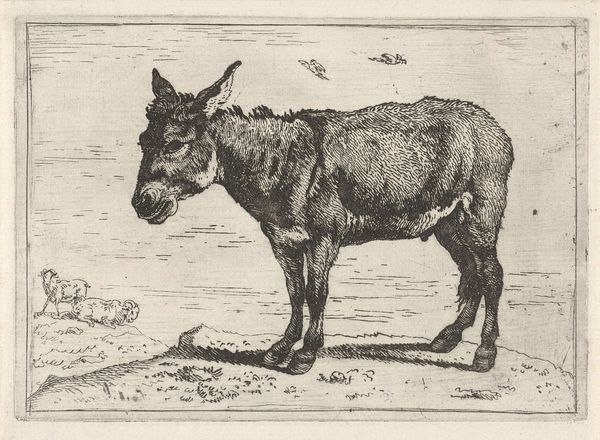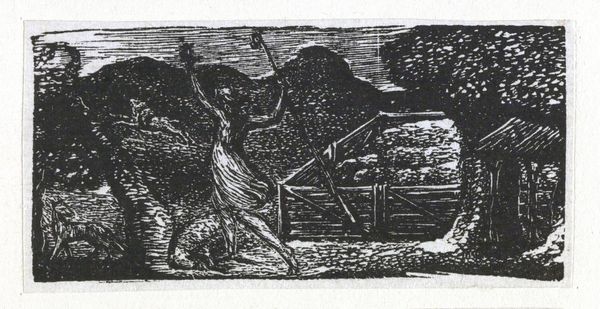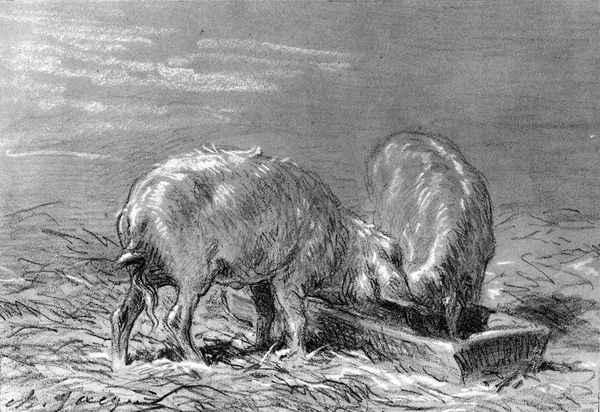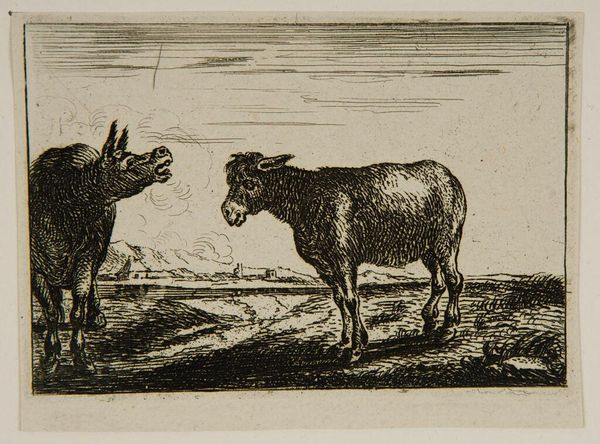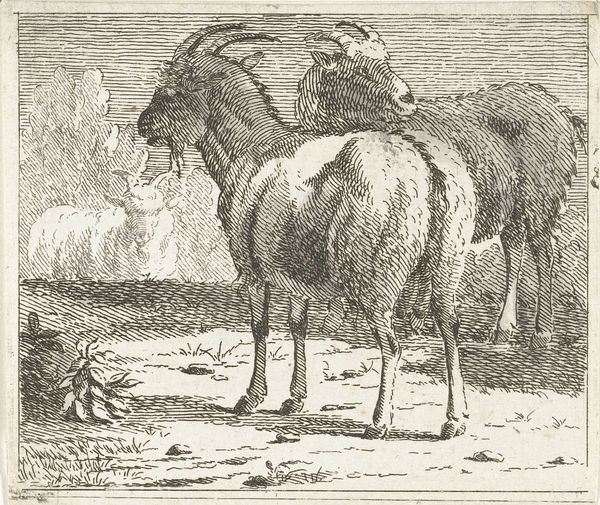
Dimensions: image: 33 x 77 mm
Copyright: NaN
Curator: There’s a real sense of weary resignation in this miniature engraving, isn’t there? Editor: Indeed. This is ‘And Unyok’d Heifers, Loitering Homeward, Low’, by William Blake. Its dimensions are quite small, just 33 by 77 millimeters, yet it contains such a depth of feeling. Curator: The political dimensions here are interesting. Blake's pastoral scenes often critique the social hierarchy. The tired animals and drover can be seen as a commentary on exploitation and class. Editor: I agree. It's a potent image, especially when considered alongside Blake's other works, which challenge the established norms of his time through the lens of social injustice. Curator: Knowing Blake’s social milieu really brings another layer of meaning to what could initially seem like a simple pastoral scene. Editor: Absolutely, and that awareness adds to the emotional weight the piece carries.
Comments
tate 8 months ago
⋮
http://www.tate.org.uk/art/artworks/blake-and-unyokd-heifers-loitering-homeward-low-a00127
Join the conversation
Join millions of artists and users on Artera today and experience the ultimate creative platform.
tate 8 months ago
⋮
Samuel Palmer was the most important of Blake’s followers, known as the Ancients. Palmer first met Blake in 1824. He described these illustrations to an imitation of the First Eclogue by the Roman poet Virgil as ‘visions of little dells, and nooks, and corners of Paradise’. Palmer’s art was particularly influenced by them. These prints appealed to the Ancients because they were the result of Blake’s experiments with a new medium; he had never engraved on wood before. Even at the age of sixty-four he wanted to make further explorations in his art. Gallery label, August 2004
